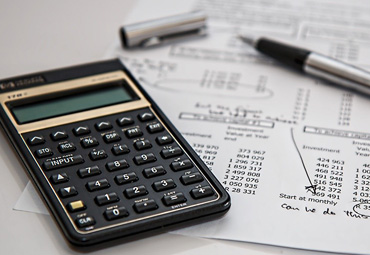The new tax year started on 6 April. Here are the self-employed tax changes you’ll need to know about for 2020-21, including new self-employed tax rates and thresholds.
More time to pay self-employed tax
Small businesses and self-employed people across the country face a challenging few months because of the coronavirus pandemic. The government has announced a number of support measures, including self-employment tax bill deferrals.
This means your next Self-Assessment tax payment will be due in January 2021. You don’t need to make a payment on account in July, but the government says that if you can, you should.
And if you’re a VAT-registered business with a VAT payment due between 20 March 2020 and 30 June 2020, you don’t need to pay until 31 March 2021, but again, the government says that if you can, you should.
Finally, if you missed the Self-Assessment deadline in January, the government has given you a four-week extension to file (starting 26 March). This is to give you the opportunity to apply for the Self-Employed Income Support Scheme (SEISS)
2020-21 tax cut as National Insurance threshold rises
The National Insurance threshold has increased to £9,500, up from £8,632 in 2019-20. The government says this works out on average as a £78 cut in self-employed tax.
This means you’ll start paying Class 4 National Insurance on profits above £9,500. The Class 4 National Insurance rate is nine per cent on profits between £9,500 and £50,000 and two per cent on profits above £50,000.
Class 2 National Insurance contributions are £3.05 a week in 2020-21 (paid if your profits are between £6,475 and £9,500).
Self-employed National Insurance thresholds and bands 2020-21
Small profits threshold, Class 2 NICs and Class 4 NICs (sole traders)
- Small profits threshold – this increases from £6,365 to £6,475 for 2020-21. You start paying Class 2 NICs if you earn more than this threshold
- Class 2 NICs – the flat rate increases from £3.00 per week to £3.05 per week for 2020-21
- Class 4 NICs thresholds and limits – the earnings threshold before you start paying increases from £8,632 to £9,500 for 2020-21. You pay 9 per cent of profits between £9,500 and £50,000 per year, plus 2 per cent of what you earn above that
Employer and employee National Insurance contributions (limited company directors)
Limited company directors are classed as employees and have to pay employer National Insurance contributions through the company and employee National Insurance contributions via payroll.
- Secondary threshold for employer NICs – this increases from £8,632 to £8,722 in 2020-21 (you’ll pay employer NICs of 13.8 per cent on annual salary payments above this threshold)
- Employee NICs – you pay 12 per cent of earnings between £183 and £962 per week in 2020-21 (up from £166 and £962 per week). You pay 2 per cent on any earnings above £962 per week
Personal Allowance:
The Personal Allowance remains at £12500. The personal allowance is the amount that you can earn before paying tax.
Dividend Allowance:
The good news is that the government has made no further changes to the dividend allowance for 2020-21 which remains at £2000.
Capital Gains Tax changes:
The Capital Gains Tax allowance is £12,300 in 2020-21, up from £12,000 (it’s increased to £6,150 for trustees of settlements, up from £6,000).
This is the amount you can earn tax-free on your profits when selling an asset (including property, shares and business assets).
There’s also been a change to the time you have to report and pay your Capital Gains Tax if you make a gain on residential property.
If you’ve sold a property after 6 April 2020, you have to report and pay your bill within 30 days of selling it.
IR35 – Off-payroll working rules delayed:
The government was due to introduce new off-payroll working rules (IR35) or the private sector on 6 April 2020, but the change has been delayed by 12 months due to the coronavirus pandemic.
The update affects self-employed contractors working through their personal service company (PSC). If you’re affected, responsibility for working out your employment status will fall to your client (although smaller clients are exempt from the change).
ISA Allowance:
Your tax-free ISA allowance remains at £20,000 for the 2020-21 tax year. But there’s better news if you’re saving for your children’s future in a Junior ISA – the allowance has increased from £4,368 to £9,000. This means you save much more tax-free for your children.
Other Allowances:
- The pension annual allowance will start to taper off from £240,000, rather than £110,000
- The Inheritance Tax nil rate band has increased from £150,000 to £175,000
If you need any further information on any of this, please get in touch.

